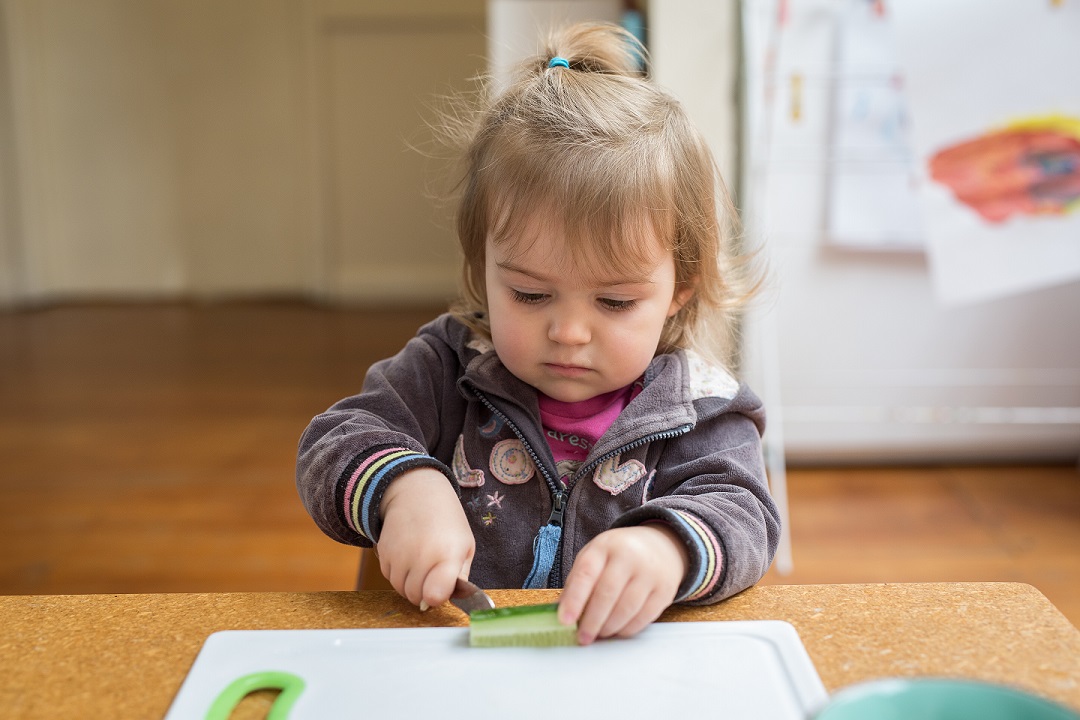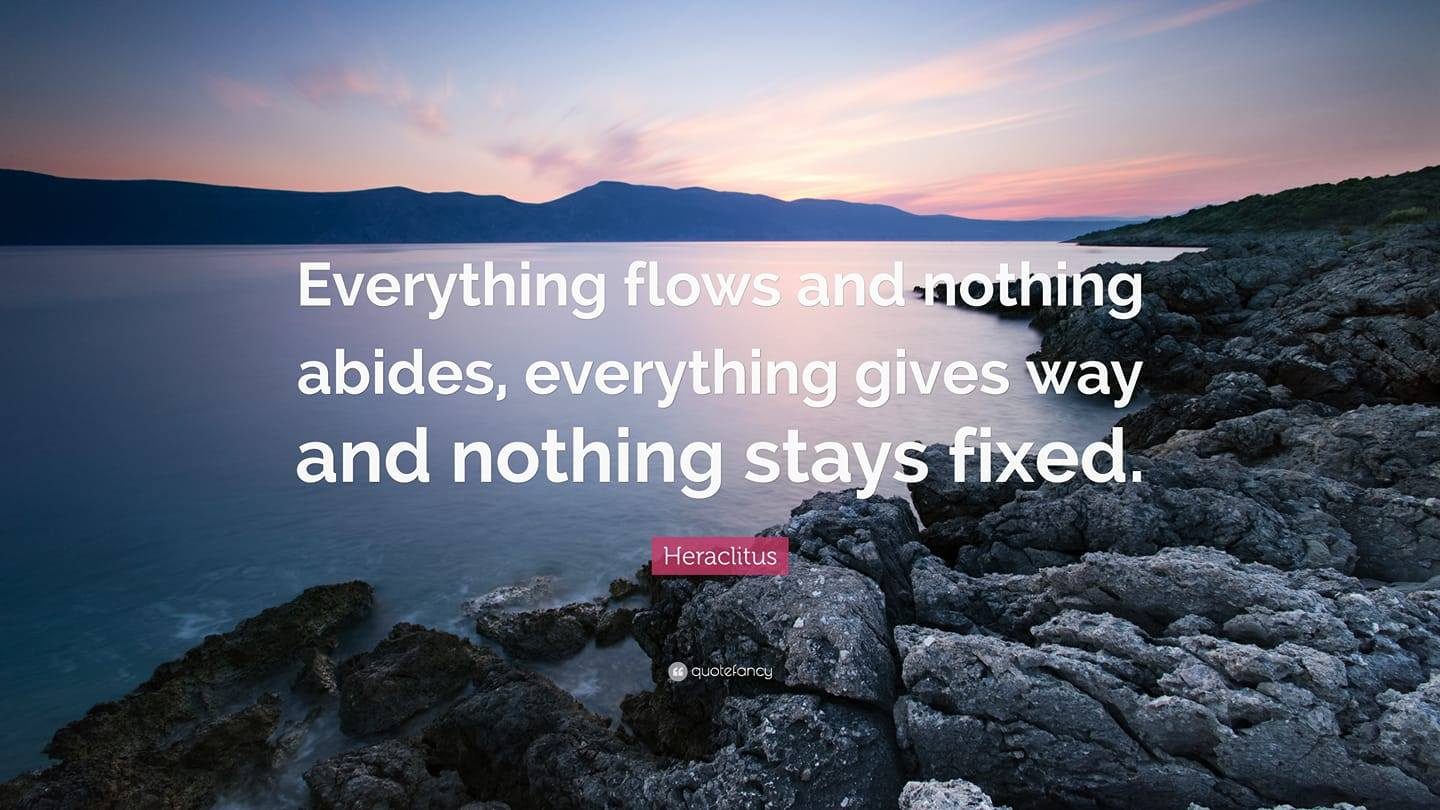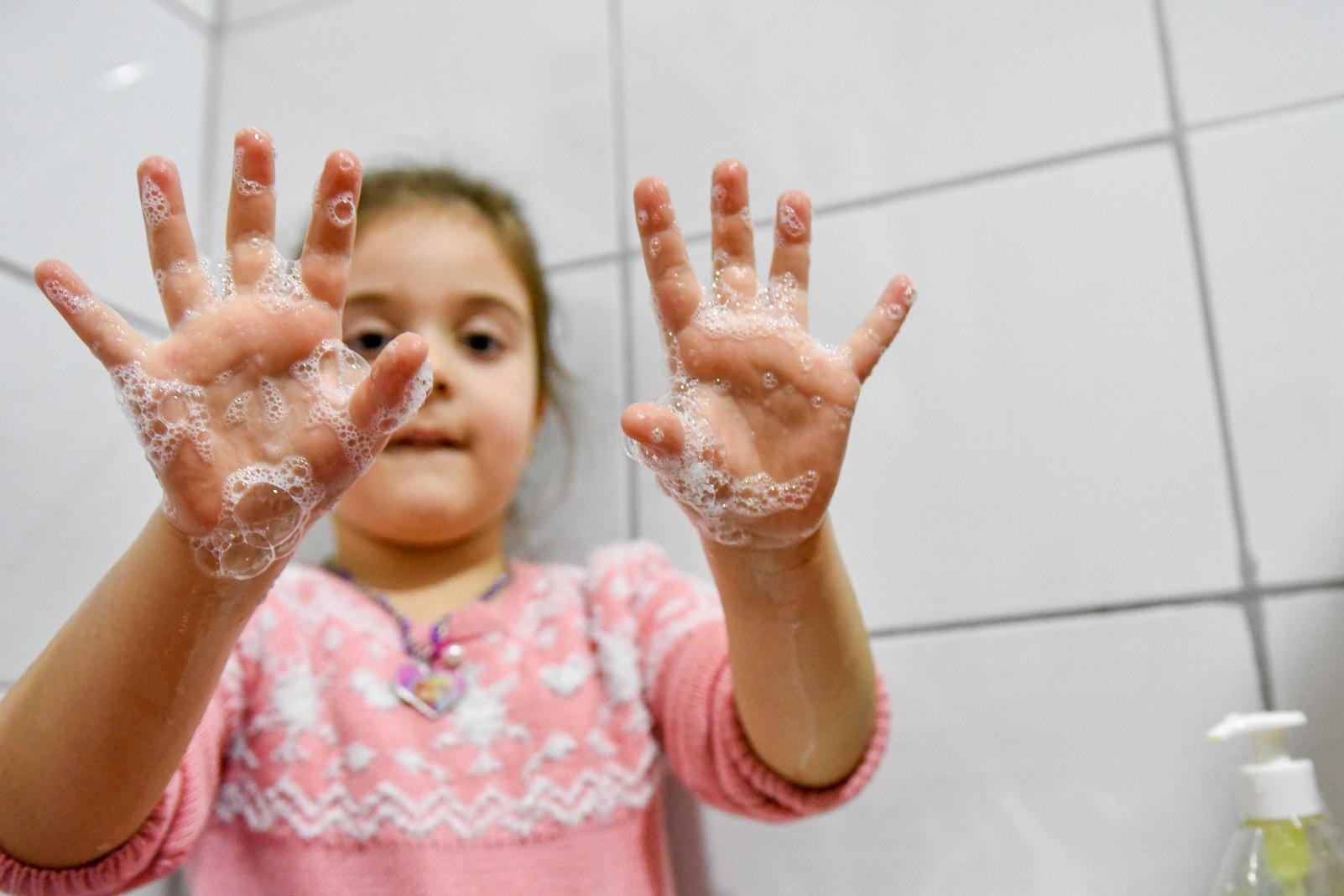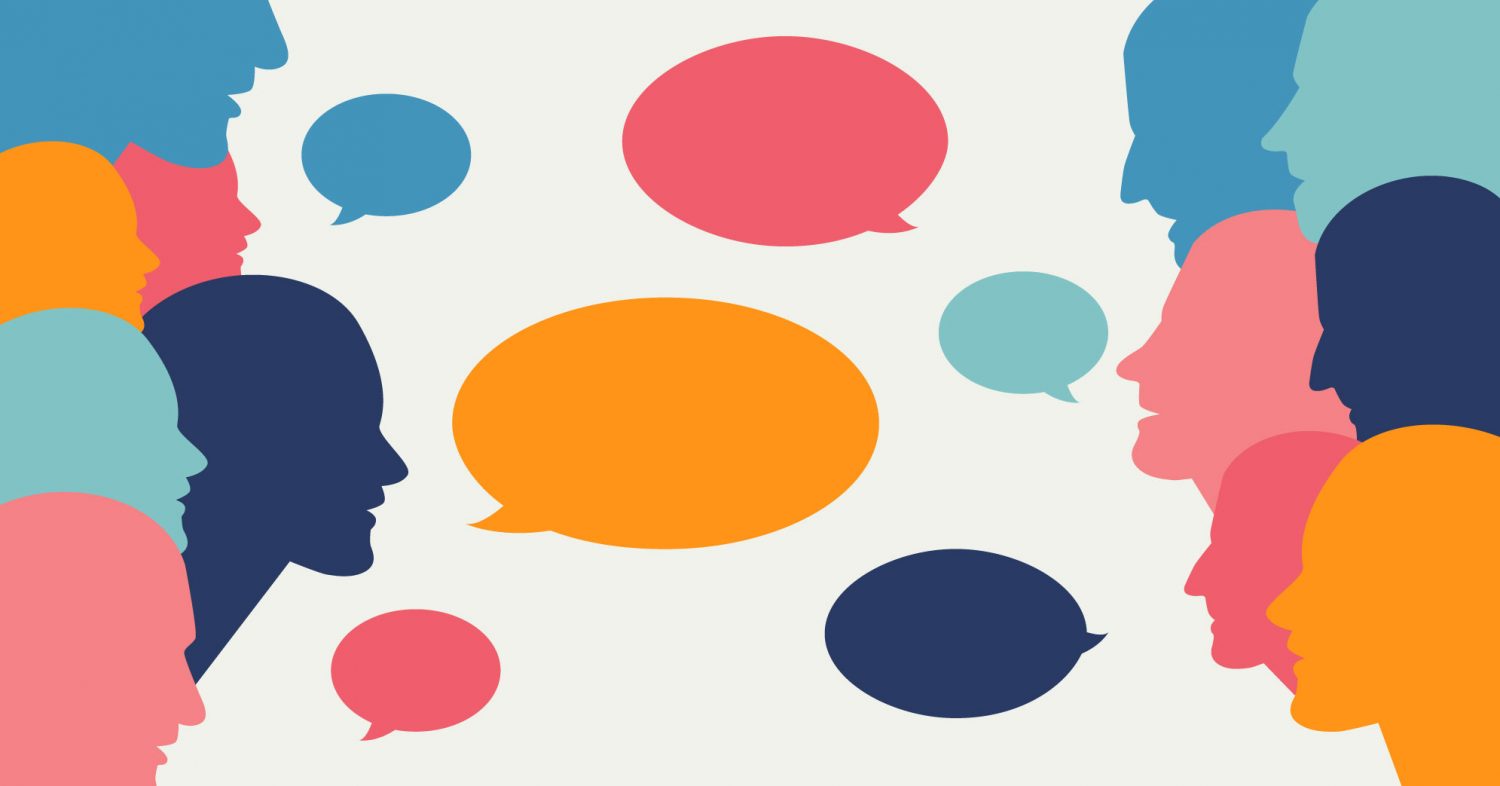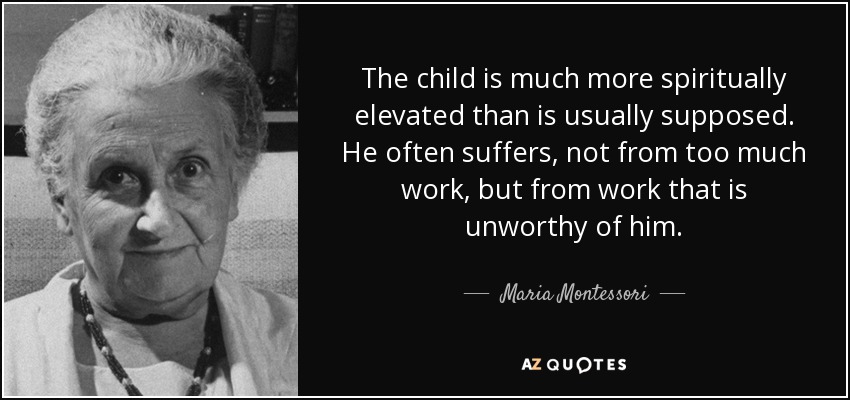As is usual at the start of a new term we have farewelled some tamariki from playgroup as they turn 3 and transition into preschool; and we have also welcomed new whānau just beginning their time at Wā Ora. Often the parents of our new tamariki comment about the work they see the nearly 3-year-olds doing; they have never imagined a 2-year-old preparing kai for morning tea, setting a place at the table, pouring a glass of water, serving themselves and cleaning up afterwards. I always explain that it is a learning process, that independence is not something that comes about in an instant, but is a journey that begins from the moment of birth. Maria Montessori (1948) wrote that “The essence of independence is to able to do something for one’s self”. We can help our tamariki learn to be independent in many small actions that will lead towards their independence as a grown human being.
Author: relda
What belongs in polite conversations?

By Rose Langridge – Humanities subjects teacher; Careers Advisor–High School
In 1936 Maria Montessori asked “what is the task confronting education? Its primary goals must be the realisation of the values of the human personality and the development of mankind” (Education and Peace, p. 54).
I think this is still the primary role of the course that we call humanities.
The Tāwari class members make the choice often about the content that they cover in history and social studies. They often choose topics that can be uncomfortable. We acknowledge this and there are set rules for how to discuss things. We need to actively listen to one person at a time and we need to think about our responses. If they are not kind, necessary or helpful then we need to think about whether we need to say what we are about to, and come up with a way to frame things so that we are respectful. If we can do this in a noncontroversial way, then we can move forward and be peaceful in many aspects of our daily lives.
A very common phrase is that in polite conversation one should avoid discussing religion and politics. The reason for this is so that awkward situations do not arise. However, it cannot be denied that religion and politics are two highly influential factors that shape any human society. Humans are the change agents of the world and our cultural markers generate the social world in which we live. I do not think the issue is the content but rather not knowing how to have these courageous discussions in a polite and non-confrontational way.
This is what we should be focusing on.
It is clear that developing the skills to analyse and discuss our world needs to be central to the humanities programme. Being able to equip students with the skills to unpack our world in a meaningful way is imperative given the floods of data that we all encounter on a daily basis.
Both Kawakawa and Tāwari also have a weekly wānanga (seminar). This is a key component of the high school model and relates directly to the principles of education and peace. The purpose of wānanga is to meet, discuss, deliberate and consider things. By learning how to interact with difficult material in this way class members are able to begin to develop their own beliefs about the world and the change that they want to see.
We as adults are far more likely to be rigid. It is children who by their nature are all motion. Giving them the skills to make sense of the world, question where they stand and discuss sensitive topics in a respectful way, may indeed change the world.
They could move us towards peace which would indeed be a great gift not only for them but for us as well.
The nature of change
By Jason Johnson – Kawakawa Teacher
“Everything flows and nothing abides” —Heraclitus
With the welcoming of Hilary to our team up here in Kawakawa and the departure of Richard, who has led our programme for the past five years, the return to school from lockdown and the strange restrictions on daily life, and the upcoming general elections and ongoing strife I read about each day around the world, I have found myself reflecting on the nature of change.
As humans, we generally like to be in a state of equilibrium. Much of our effort is devoted to removing chaos from our lives, to developing systems for organising and resetting our environment. Why? Because predictability saves energy. When our environment is predictable, we expend less of our precious mental resources carrying out everyday activities. Thus humans have developed an innate behaviour to bring order to our environments, not just to be more comfortable (who doesn’t feel better in a tidy room!), but to save our resources for more important things. Like sharing ideas, making art and music and connecting with loved ones.
Yet we live in an ever-changing world that requires us to adapt to changes in our environment on a daily basis. Some changes are small and able to be accommodated easily — “now it’s raining, best put on a raincoat” — but others, like the global pandemic we are currently experiencing, require total paradigm shifts and the establishment of a new equilibrium.
Ecologists have a term for this process. They call it disturbance, and it is a vital part of the functioning of healthy ecosystems. When a large tree falls, opening up the forest canopy, or fire sweeps across a hillside, burning up a stand of Manuka, there is massive change. At first, it may seem catastrophic — that which was once, is no more. But nature quickly fills the gaps. The resources once used are now free to be utilised by other organisms. New space is available — more light, more water — and there are opportunities for different species to take on new roles in the community. Without this disturbance, ecosystems stagnate. Dominant species monopolise resources and the system loses its biodiversity, the number of different species, and its ability to adapt to future change diminishes. In short, without some disturbance, ecosystems lose their ability to cope with change at all.
In finding our new equilibrium we are now presented with opportunities. We should assess what is fundamental to the way that we do things and wants to be preserved. What can we choose to develop in a new way, to take advantage of the changing situation? As we do this, however, we remember that too much change, or constant change, can be stressful. We need to be able to find a new equilibrium. And as adults, we must show our young people how to ride through times of uncertainty. We can model how to adapt and, as Jacinda Ardern reminds us, how to be kind to each other as we do it.
How the Montessori approach is helping us at this time
By Anna McLean – Preschool Deputy Principal
Who could have predicted the impact to our daily lives in the last two months? As adults, some of us have had to undertake a major shift in the way we work. Working from home, holding meetings via Zoom and managing to separate work from home life and much more!
Now that preschool is open, it is worthwhile looking at how Montessori philosophy has played a part in preparing tamariki for the changes they have been experiencing.
One of the big changes at school is asking whānau to drop off and pick up their tamaiti at the gate. For the most part, we have seen the confident way that tamariki have been coming in the gate and heading to their classroom. They have to take off their shoes, hang up their bags and coats and make their own way into the class, sometimes on their own. And they have been doing it!
Montessori talked about education being an aid to life. The lessons in practical life prepare tamariki to be independent. From the start of preschool at age three, our tamariki are shown how to look after themselves through the lessons of self-care. The dressing frames help them to learn how to do up buttons, zips, domes and eventually how to tie bows. When a tamaiti has not learnt one of these skills, there is always an expert who can help them!
One of the very first lessons a tamaiti receives is handwashing where they are shown, step by step how to wash their hands properly. Through grace and courtesy lessons (small group lessons focusing on one action) we are able to introduce and reinforce the etiquette of how to cough into your elbow, blow your nose, how to change our greetings from handshakes to elbow bumps, how to say excuse me if you are walking past someone. These group lessons can be used to introduce a wide range of behaviours that need to be explicitly taught.
Throughout the day, tamariki have been carrying on with their mahi (work) in the same way as they would have done prior to Covid-19. Preschool is a safe and predictable place. The routines and rituals can be adjusted to accommodate changes. Hands need to be washed more regularly. We need to be more careful around food preparation and delivery. Washing tables now has an added purpose for the tamaiti. The hardest thing tamariki have had to adjust to is the loss of independence around serving themselves kai for morning tea and lunch.
Thinking ahead to the time when whānau can come back into the preschool playground, how can the independence that we have seen from tamariki be supported now that they have shown us how capable they are?
Freedom and Responsibility in a Primary Classroom
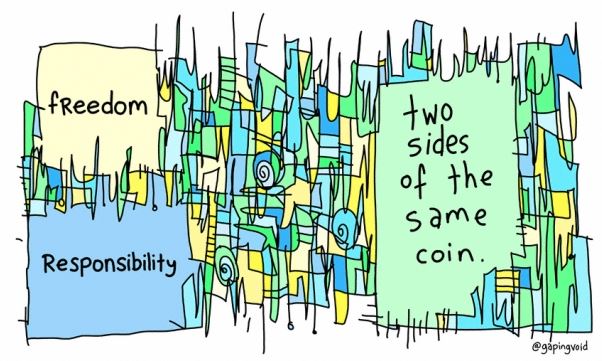 By Carol Palmer–Tawhai Teacher
By Carol Palmer–Tawhai Teacher
Wander into a Montessori primary school class at any given moment and you may be likely to see small groups of tamariki working quietly with books and materials accompanied by the gentle hum of focused discussion. You may also see a cacophony of tamariki researching, experimenting, recording and chattering excitedly about their intentions and discoveries. Both of these scenes and the whole spectrum in between are signs of a well-functioning Montessori class. But there are also times when tamariki become chaotic, distracted and side-tracked, or simply drawn to do something that is not in their educational interest.
Dr. Maria Montessori said, “To let the child do as he likes, when he has not yet developed any powers of control, is to betray the idea of freedom.”
In a Montessori setting, we tend not to have structured times and the students are free to choose what to do and when to do it. In order to create a busy gentle hum, we have strategies to ensure that we do not lose the child to chaos (too often!) We do this by offering the right amount of freedom with the right amount of responsibility.
While the application of the theory will vary slightly between classes and between children within a class, all Montessori kaiako use a few basic strategies to facilitate the child’s independent learning adventure, one that has a rich curriculum that allows for progression of learning at the child’s own pace. These are:
Conferencing: Teachers conference regularly with each child. Sometimes this is done individually and sometimes within groups. Sometimes formal, sometimes informal. Children should be used to hearing, “We’ll get back together in a few days to talk about how this mahi (work) is going.” This creates the understanding that the child is responsible for doing the work but it also ensures an understanding that we will come together to reassess and evaluate progress which creates the understanding that the child is responsible for doing the work.
Work journals: Children record the work they do each day in their journal. The teacher and the child assess the journal together and evaluate their work choices, use of time and lesson needs. Some children are given additional supports such as Work Plans, To Do Lists and Work Menus. These will change throughout the year as children become better able to take on the responsibility of managing their own freedom.
Community expectations: Montessori classes have a LOT of rules. The children set most of these rules themselves during community meetings. These meetings allow them play an active part in the running of their community; understanding the purpose behind a rule (since they have all discussed and agreed upon each rule), makes them far more likely to follow it. Often children will point out to one another that they are not following a rule, or meeting the community expectation of focused work during class time.
So how do we achieve the balance between enabling a child to find their own educational pathway and letting them do what they want? With difficulty! For kaiako, it is an art of constant observation, reflection and refinement. Dr. Maria Montessori spoke a lot about the role of the adult, which is to ensure that each child has sufficient challenges to keep them engaged and productive but also to ensure they have enough time in between to follow their own interests.
These strategies can help you as a parent understand what is going on in your child’s class. When trying to make sense of the cacophony you may see or hear, try asking: what did you record in your journal today? What was your favourite lesson? What is on your To Do List? What work did you last discuss with your teacher? What are you researching? How are you managing your freedom? Are you making good choices?
Using the same language they are used to hearing in school also helps children reflect on their own learning which gives them a greater sense of freedom and responsibility.
Nuturing the spirit of our tamariki

By Robin Wilkins – Pūriri teacher
Dr. Montessori observed that children go through four distinct and noticeable periods of physical and psychological development; birth to six (development of the absorbent mind and individual personality), six to twelve (elaboration of mind and personality), twelve to eighteen, (development of social independence), and eighteen to twenty-four (spiritual and moral independence). Development is intense at the beginning of each plane, then peaks and tapers down to the next plane. As ākonga move from plane to plane, absorbing all the lessons presented, they are also working hard to discover who they are along the way. Needless to say, stress and anxiety are part of this journey.
Mental health is essential, meaning we need to approach the care of feelings and minds as diligently as we approach physical health. Science tells us that when the body is experiencing excessive anxiety, it can be due to the connection between the amygdala – the brain’s “fight or flight” region and the prefrontal lobe – the regulating part of the brain. The frontal lobe is supposed to keep the amygdala in check, but in children and teens, that process is still under construction.
Tamariki are going to respond to stressors differently than adults do and may have a harder time regulating the stress-triggering part of the brain.
There are many types of stress and anxiety, which can make them tricky to spot. These can be mistaken as learning disorders because the behaviour challenges that result can impact a child’s ability to be successful in school. A child or teen dealing with chronic stress and anxiety may miss school a lot, frequently complain of stomach upset, have attention/focus struggles, be inattentive and/or restless, be clingy or even angry and disruptive.
An article entitled ‘Anxiety in the Classroom’ from the Child Mind Institute lists a variety of common types of stress/anxiety. Social anxiety – related to peers and social interactions which cause extreme self-consciousness; generalised anxiety – across the board stress response to a variety of stimuli; obsessive compulsive behaviour such as hand-washing; specific phobias – profound fear of certain situations, activities, etc. Stress can vary wildly between children in the same age group, e.g. one child may act out in a visible and audible way while another child could become withdrawn and inattentive. And as children become older, anxiety and stress become harder to spot – their struggles aren’t always visible.
While the social/emotional Montessori curriculum delivered in class helps ākonga to develop strategies for coping with anxiety and stress, the Child Mind Institute also lists some pointers to guide parents who wish to help their children escape the cycle of anxiety at https://childmind.org/article/what-to-do-and-not-do-when-children-are-anxious/.
Kathryn Berkett, a neuro-science expert and Hutt local, also has many great links on how we can identify and support anxiety and trauma in our tamariki, as well as build resilience on her website http://www.engagetraining.co.nz/online-resources.html.
The Wā Ora Montessori School Graduation Questionnaire
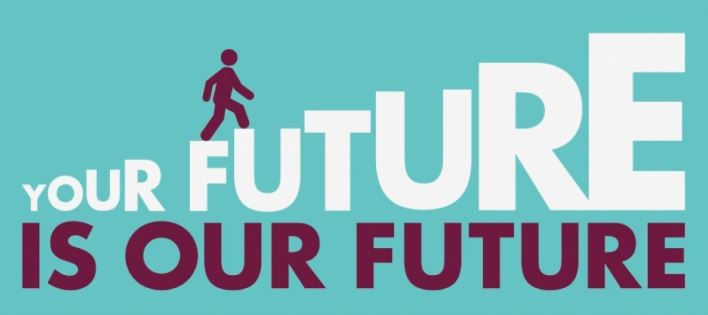 By Thomas McGrath – Deputy Principal High School
By Thomas McGrath – Deputy Principal High School
Montessori emphasised that education is to be an ‘aid to life’. But, what does this mean in the final years of school (15–18 years) where a large focus is on gaining a formal qualification? Here are some questions that I would hope graduates of Wā Ora Montessori school could answer ‘Yes’ to from being educated at Wā Ora. Take the test yourself.
1. Do you know your place in the time and space of our evolving human and environmental history and the power you have to effect meaningful and long lasting change, both now and in the future?
2. Do you have the means and confidence to solve problems or resolve conflict for yourself or others, through understanding and empathy, especially with those who are more vulnerable than, or different to, you?
3. Can you work and sustain focus on an individual or collaborative task or project by necessity and/or choice, not only to receive remuneration, but for fulfillment?
4. Do you know how to take care of your physical, spiritual, mental and social needs?
5. Can you read, view, listen to, calculate, research, estimate, hypothesise, test, confirm, reflect upon, criticise and admire the world, both natural and supranatural?
6. Are you an independent and interdependent ‘life-long lover of learning’?
7. Can you speak confidently and genuinely, in more than one language, with another person/s using appropriate social/cultural etiquette?
8. Will you respect and uphold the rules that are required to govern society, protest or affect change to rules that are inadequate or even harmful, and be persistent yet gracious if your efforts are not immediately successful?
9. Can you safely use a range of appropriate tools and materials for a specific functional, survival, or creative purpose?
10. Are you aware of the many forms of waste humans produce and how to reduce, reuse, recycle, and dispose of waste correctly; and do you?
11. Can you sustainably and ethically earn your own money, understand interest and investment, exercise your power and rights as a consumer without getting misled by marketing and advertising?
12. Do you know how to care for a range of plants and animals?
13. Do you understand the role physical and digital technology plays in society, and how to use, and/or develop it for productive means?
14. Do you understand the significance of, and our duty towards, honouring New Zealand’s bi-cultural history, and that our nation is founded on the basis of mutual respect for the unique cultural and personal identities of all its inhabitants?
15. Can you play a range of sports or games fairly, for pleasure or for competition?
16. Do you appreciate the Arts as a means of personal and social pleasure, criticism, comment, documentation, and exploration?
17. Do you acknowledge that world peace relies on harnessing the diversity of all humankind, according to strength and with awareness of weakness, towards achieving a shared aim?
18. Can you organise and cook a healthy and affordable meal for a group and clean up afterwards?
Being “Restorative”
By Jason Johnson – Kawakawa teacher – High school
When I am asked to explain what ‘restorative practices’ actually are, I find it useful to think about what we are trying to achieve when using them. We use them when we are trying to restore relationships. At times when trust has been
broken and the relationship has become damaged.
As humans, we rely on trusting our fellow person to get on with our day. We have to be able to expect that they do not intend to harm us, or else we end up constantly vigilant. But more than that, we know that truly amazing feats are
possible when we work together, which can’t happen if we don’t trust each other.
Young people need help with relationships. We all do, sometimes. We make mistakes. We break the trust of others. Montessori taught that young people build their personality through action, by trying and doing things with their hands; experiencing their own success and failure. They also experiment with their words, sometimes with equally disastrous outcomes. It’s important that they have the freedom to make these mistakes, but also important that we address any harm that occurs as a result.
As their guides in this life, we are charged with helping them to restore the relationships that get damaged along the way. We use restorative practices to help them see that whatever impact a situation is having on them, it is having
other impacts on other people too; to help them see that until that impact or harm has been acknowledged, it hangs about in the air, continuing to erode the trust between the parties. Restorative processes keep the dignity of all
people in the foreground. They hold us accountable to others.
Perhaps most challengingly though, our young people inevitably look to adult relationships too. They notice the way that we interact in the world, and behave accordingly. It is up to us to model restorative behaviours in our daily lives.
We must try to avoid using totalising language, strive to understand the different lenses through which others see the world and be prepared to change our own views. It’s not always easy, but what part of being a parent is?
Tikanga in the classroom
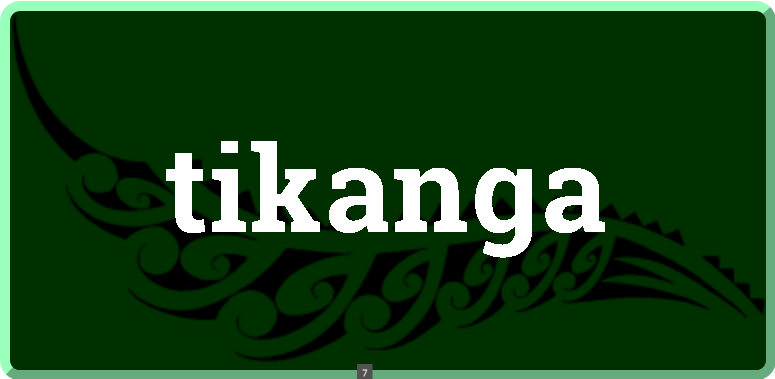 By Krista Kerr – Pōhutukawa teacher
By Krista Kerr – Pōhutukawa teacher
I am often asked as a teacher, “What can I be doing at home to be more aligned with school?” In answering this I usually talk about topics related to the special Montessori character of our kura; such things as allowing independence, providing order and consistency, having freedoms and responsibilities, etc.
However, another part of what we do and how we are at Wā Ora is related to bi-culturalism. Individual akomanga (classrooms) and te kura as a whole adhere to certain tikanga, which children easily and naturally absorb and follow.
An excerpt from https://hakatours.com/blog/cultural-dos-and-donts explains: “Generally speaking, tikanga are Māori customary practices or behaviours. The concept is derived from the Māori word ‘tika’ which means ‘right’ or ‘correct’ so, in Māori terms, to act in accordance with tikanga is to behave in a way that is culturally proper or appropriate.”
A lot of tikanga are based on the Māori concept of Tapu and Noa.
“Tapu can be interpreted as “sacred” but also “not ordinary”, “special” or even forbidden. It is one of the strongest forces in Māori culture. People, places, events and objects can be Tapu and should not be interfered with. Also, everything associated with the human body is considered tapu in Māori belief.
Noa, “ordinary” or “known” is the opposite of Tapu and refers to ordinary, everyday things such as food.”
Some of these tikanga include taking shoes off before entering a class (to leave the puehu or dust we carry from the outside world at the door); not sitting or putting hats on tables, especially tables which are used for kai; saying a karakia before eating kai; and not touching a head of a child, unless invited to – this relates to the head being a very important part of the body (tapu). Using different cloths for different purposes is another example – we have different cloths for a table, for the floor and for bodies, such as hand towels. These are only used for their specific purpose and washed separately.
If you do come into an akomanga and are politely asked, for example, not to sit at a table or to remove your shoes, and do not know the reasons behind this, please do ask. To many, the tikanga adhered to in kura can be just as mystifying as some of the Montessori materials and philosophies we have, but both are great conversation starters and learning opportunities.
Some of you may already have similar tikanga at home or you may have different tikanga based on your own culture and customs. Just as I am sharing our Wā Ora tikanga with you so that you have an understanding of why we do some of the things we do, we love to hear more about your tikanga (what happens in the home lives of ngā tamariki) so that we can appreciate what is important to you and your way of being.
Work that is Worthy
By Amy Johnson – Kōwhai Head Teacher – Preschool
Recently, I came across this quote from Dr. Montessori and have considered it many times since: “The child is much more spiritually elevated than is usually supposed. They often suffer, not from too much work, but from work that is unworthy of them.” – The Child in the Family.
So, how does one determine which work is “worthy” and which is “unworthy”? We know that children especially, are active learners. They remember or understand most when they are invested—emotionally, physically or intellectually—in their self-chosen activities. This is human nature. It is how people (of all ages) learn and it is helpful to remember when we are looking for activity or “work” that is “worthy” of a child’s attention, focus, effort and exploration.
It is easy as parents and caregivers to look to new activities, toys, books or games when we want to engage these wonderfully developing minds and bodies in “worthy” activity. One look at Pinterest or a google search and you will find all sorts of suggestions, some of them even labelled “Montessori” and a few with pretty hefty price tags. If it is expensive, it must be good quality and “worthy” of my child’s time and attention, right? Counterintuitively, these pricy toys and treasures are often the opposite of what Dr. Montessori was trying to describe. Often modern, electronic toys and games, with all their lights, sounds, bells and whistles can “entertain” children but do so in a way that completely overwhelms their natural sensitivities and tendencies to engage, explore and experiment.
So, if it is not the latest gadget that our children need to engage with to develop their unique and amazing potential, what can we provide that might be “worthy” of their “spiritually elevated” attention? Amazingly, what children need, more than anything else, is to be invited and involved in life being lived. Do your children take part in the day-to-day running of your household, with whatever level of skill and ability they possess? Or does it all happen “magically” when they have gone to bed, or while they are watching their favourite show? Do they help to plan and to shop for food or other items? Do they collaborate with others to take on chores or tasks that need doing around the house? Are they allowed time to experiment, get bored and make mistakes in everyday life with everyday objects? Do they have opportunities for rich, authentic experiences with: music, literature, nature, language, culture, comedy/silliness, exercise, cooking, creating, dancing, stillness/calm, gardening, conversation, assisting others? Very few of these opportunities require a lot of money but they do take time, priority and sometimes a bit of planning.
As the weeks pass this term and they inevitably bring us closer and closer to the craziness we call ‘the holidays’, I challenge you to keep this in mind as you consider what is “worthy” of your child’s time in these precious years we call childhood.
